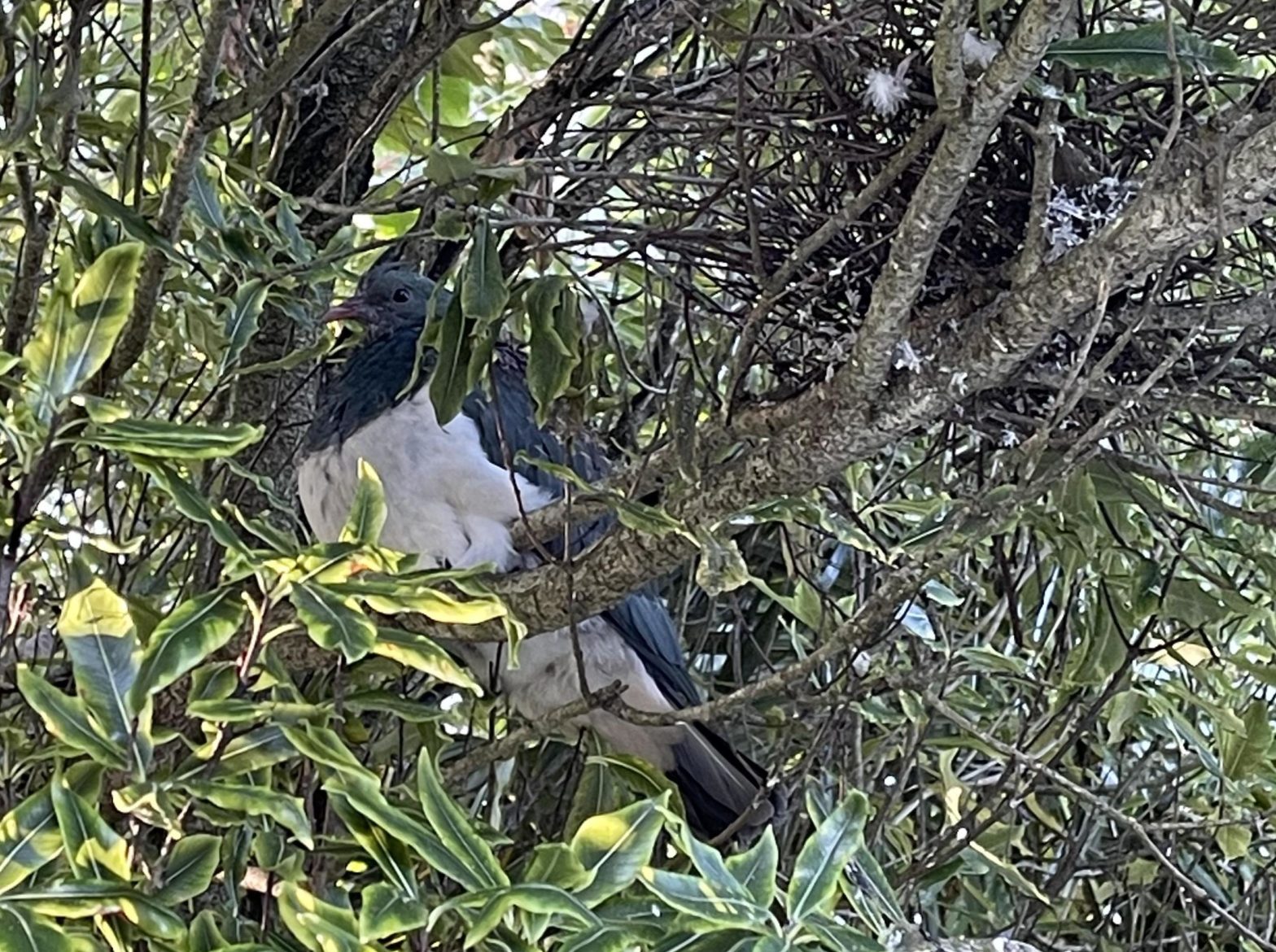The story starts with us – a couple looking for a new home. We wanted to live on a patch of land which had native bush and native birds, so when we found out about a property for sale in Patumahoe, hubby popped over to have a look. He found exactly what we had been looking for. Quiet and tucked away, with a stream full of fish and some native bush.
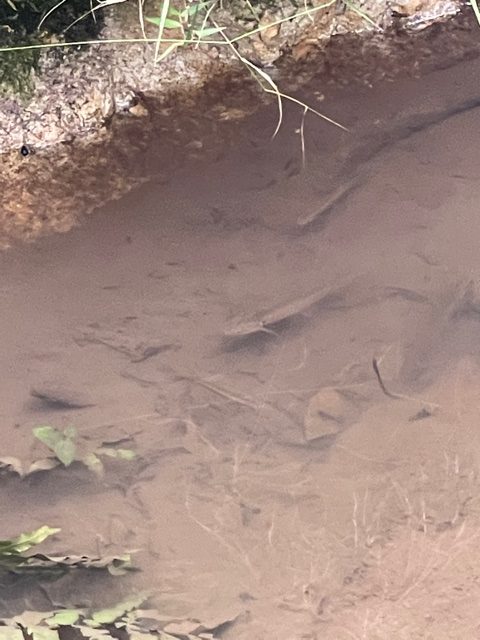
On the day hubby visited, five kererū came to greet him. The owners and real estate agent were keen to show him all over the house, but he was more interested in putting on his gumboots and finding the water cress patch.
We moved in as soon as we could, and watched with great delight when a pair of kererū started to fly over the house, spectacularly diving with their displays. We spent many summer evenings sitting on the verandah, just watching them. And then the pair started making a nest, plopping a bunch of sticks together into a complete mish mash.
Next to the driveway, directly opposite our bedroom.
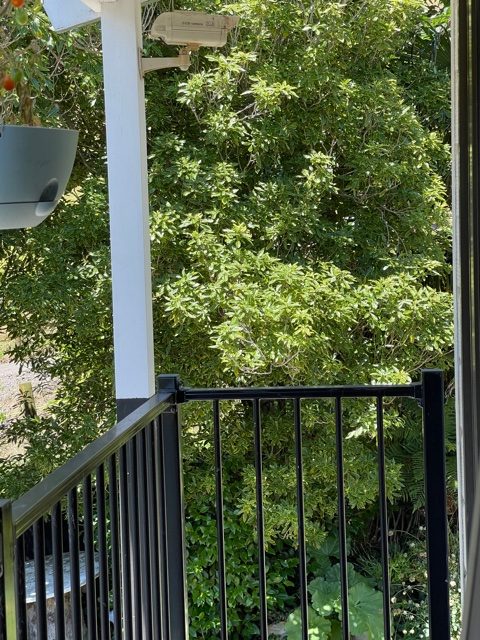
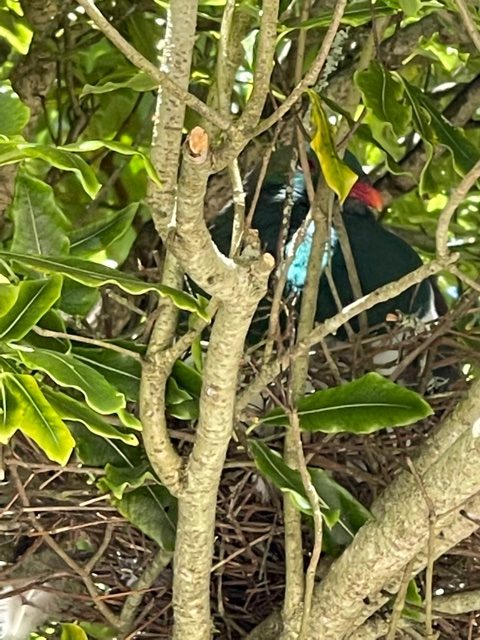
The new resident took up her place one morning. She sat all day and flew off each afternoon when she was relieved by her mate so she could feed. The rest of the time she just sat quietly. We worried at first that we would disturb her with our noise – cars going up and down the drive, a regular boot camp happening in the back yard sometimes, and dogs running around, but the kererū didn’t seem to mind.
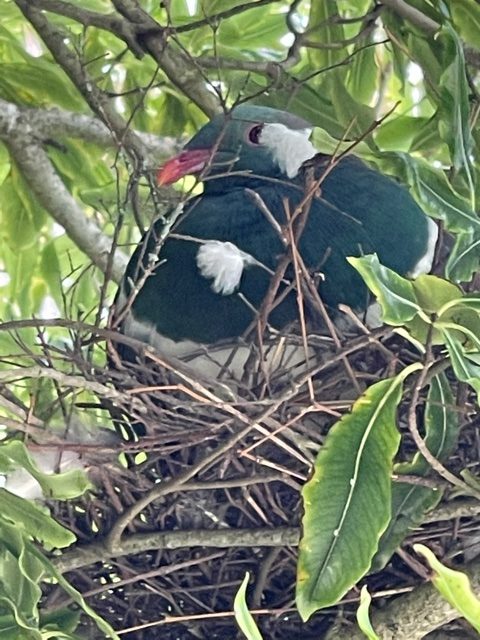
Then one day in February, there was an eggshell under the tree. We wondered – had he or she hatched, or had something got the baby?

Mum continued to sit.
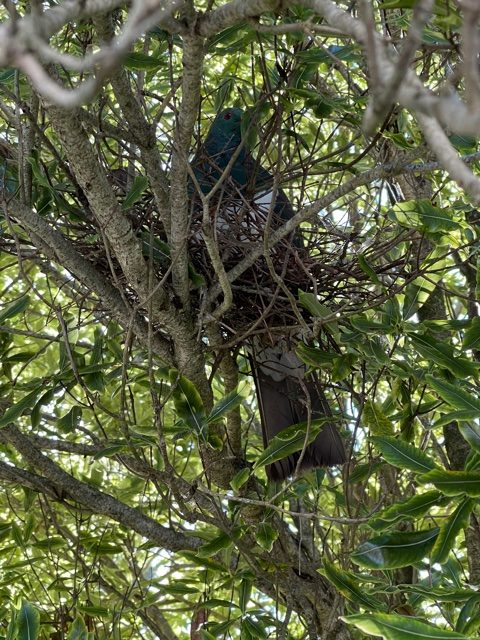
We thought that probably meant there was a chick there, but now we worried about predators. We set traps at the base of the tree – an automatic A24 at the base for rats, an A12 on the trunk for possums, and strategic baits around the rest of the house and the property.
We knew there was a chick there now.
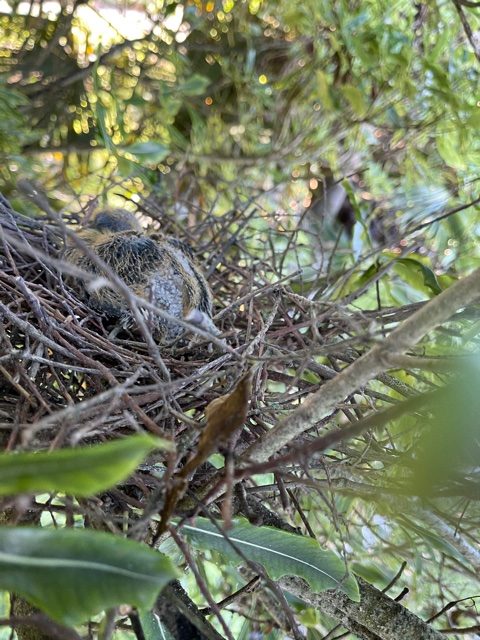
We knew we were definitely getting some of the predators, but still we worried.
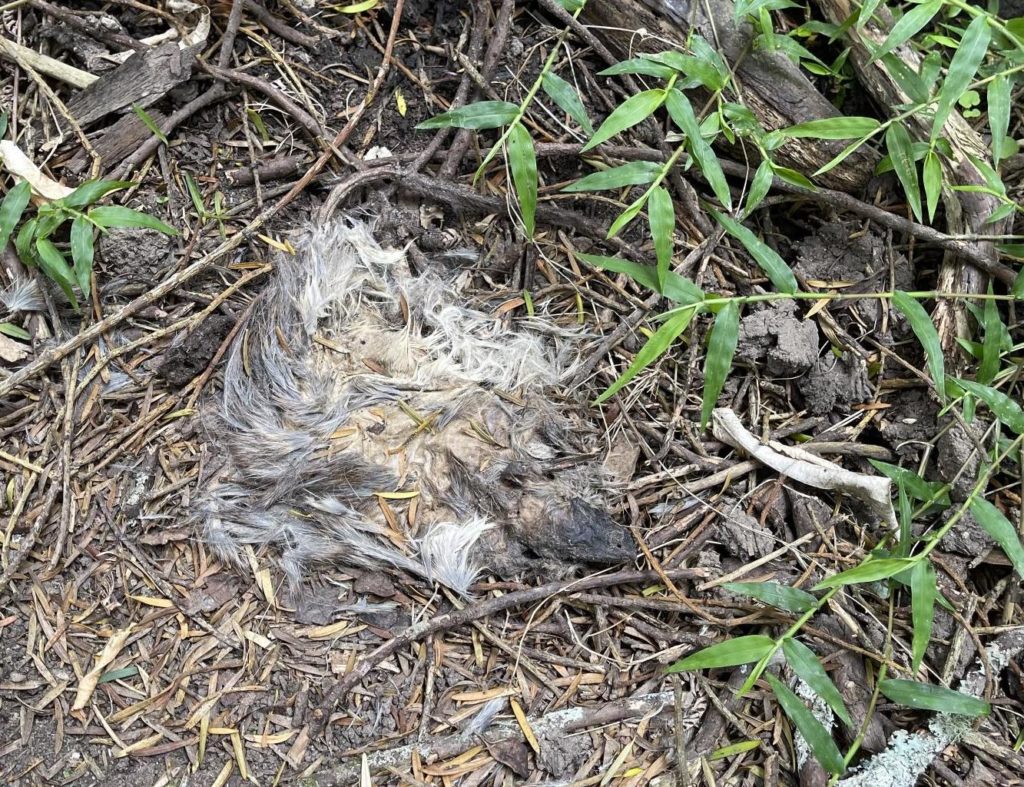
Then the mother vanished from the nest. That same day, we found a dead kererū lying in rocks approximately one kilometer from our house.
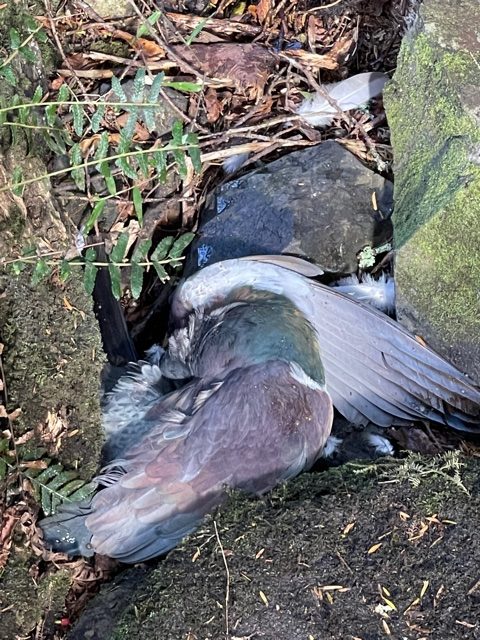
The baby bird seemed to be alone. We were worried that the mother had died. We contacted bird rescue and a vet and were advised to take the chick to a rescue centre. But it didn’t feel right. We got on a small stepladder which was just tall enough to aim the camera above the nest and this was what we found.
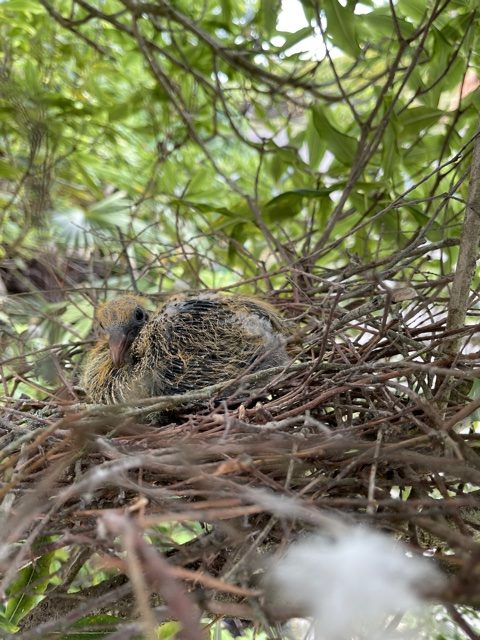
The bird did not look unwell or in distress, so in spite of our desire to “help the bird” we left it alone in the nest.
And it continued to thrive.
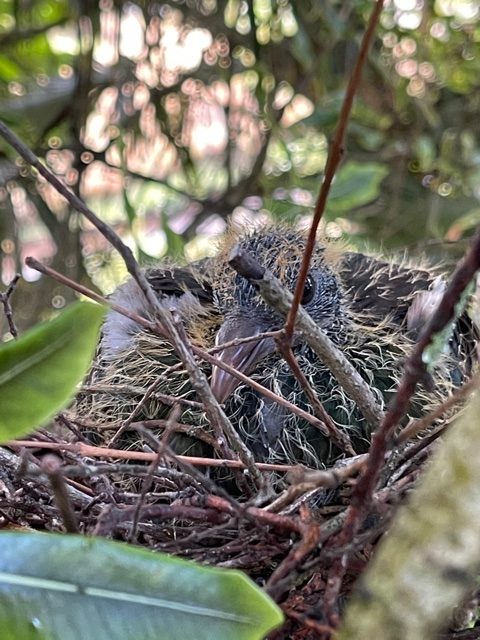
It was left alone for the majority of the day but its parents always came back to feed it. We found out that this is what kererū do. At first it had a face only a mother could love.
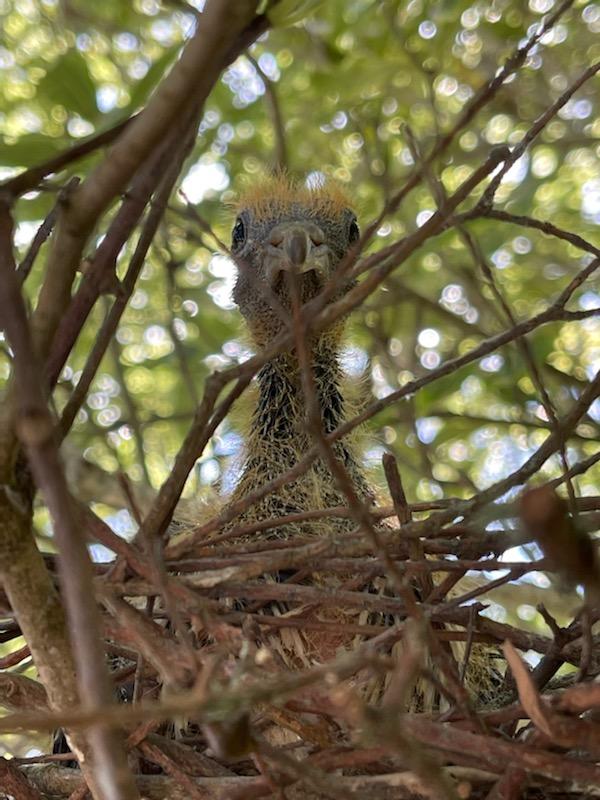
But as it grew, it began losing the baby feathers and looking a bit more like an adult.
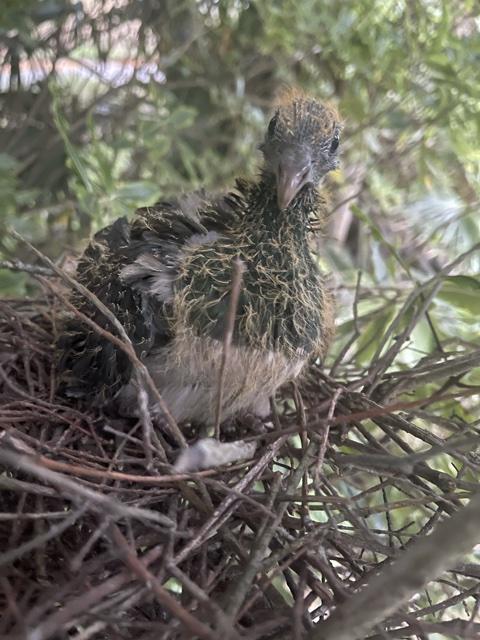
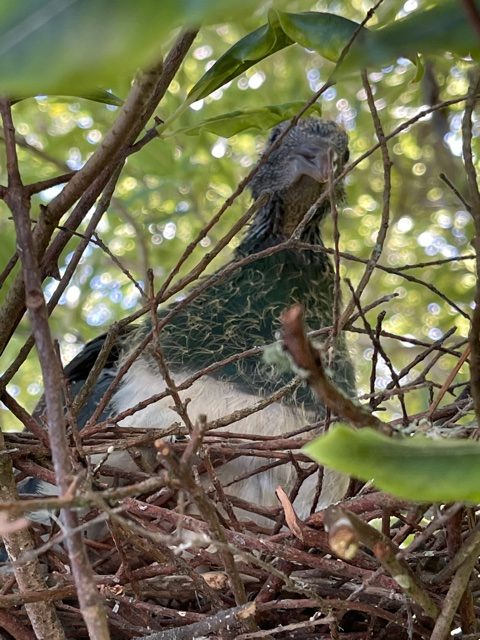
We heard a noise one night, and this is what we found at the base of the tree. Our traps were working.
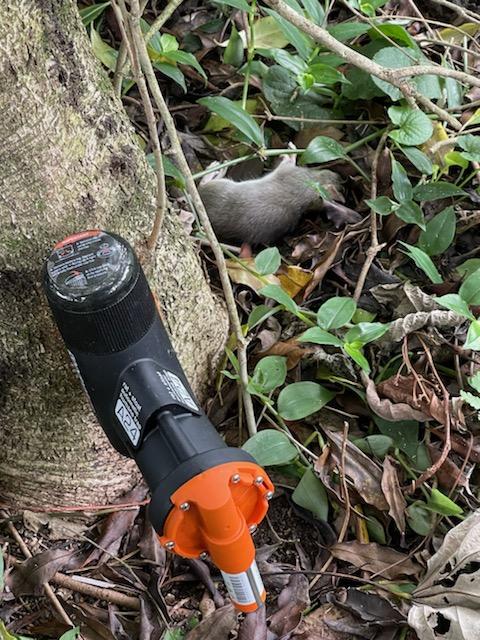
We continued to protect the chick. There was a natural hollow under a tree which seemed to attract pests, so we put out bait in that spot. We put out almost three kg of bait over three months – all gone. We knew the bait was working, from the results we found.
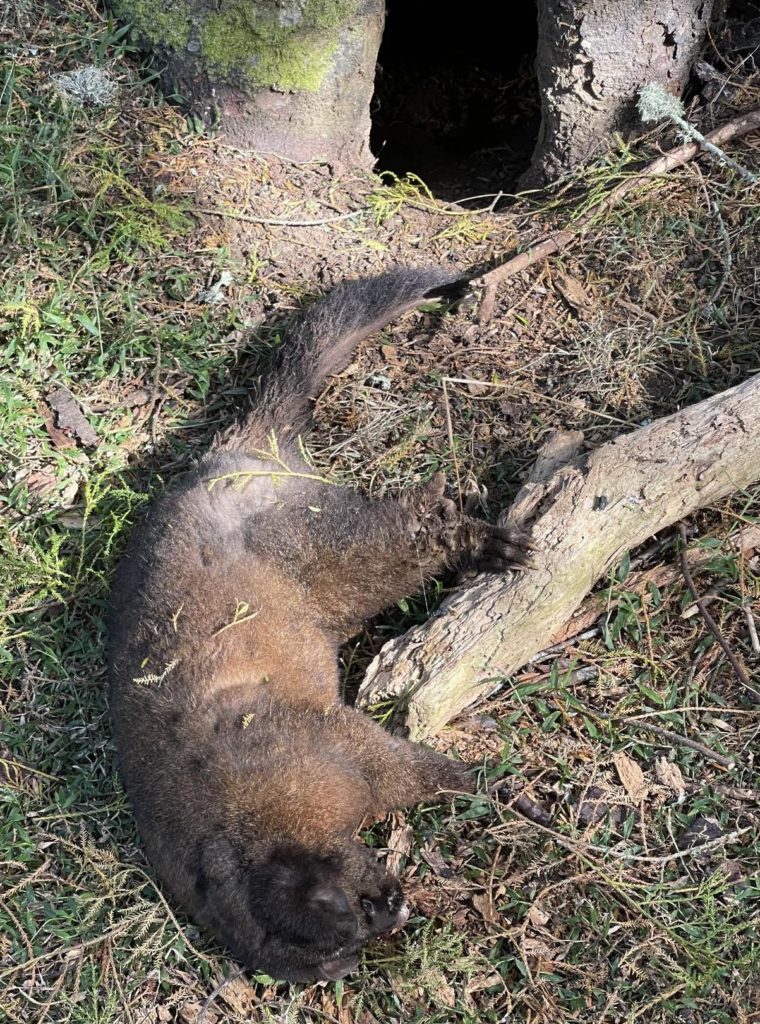
…and the bird continued to thrive.
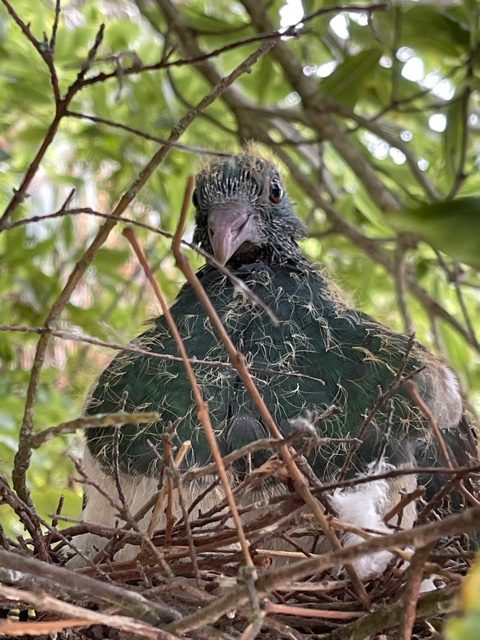
We named the chick “Kahurangi”, meaning prized and precious, and because this word also means any shade of blue. Fortunately the name fits either gender!
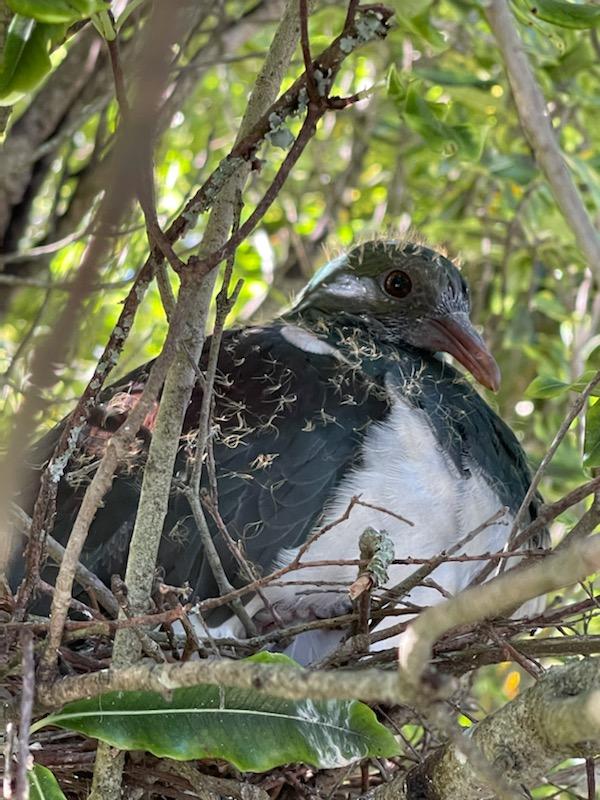
As the days passed, Kahurangi grew in confidence, now venturing out of the nest to sit on the tree branches.
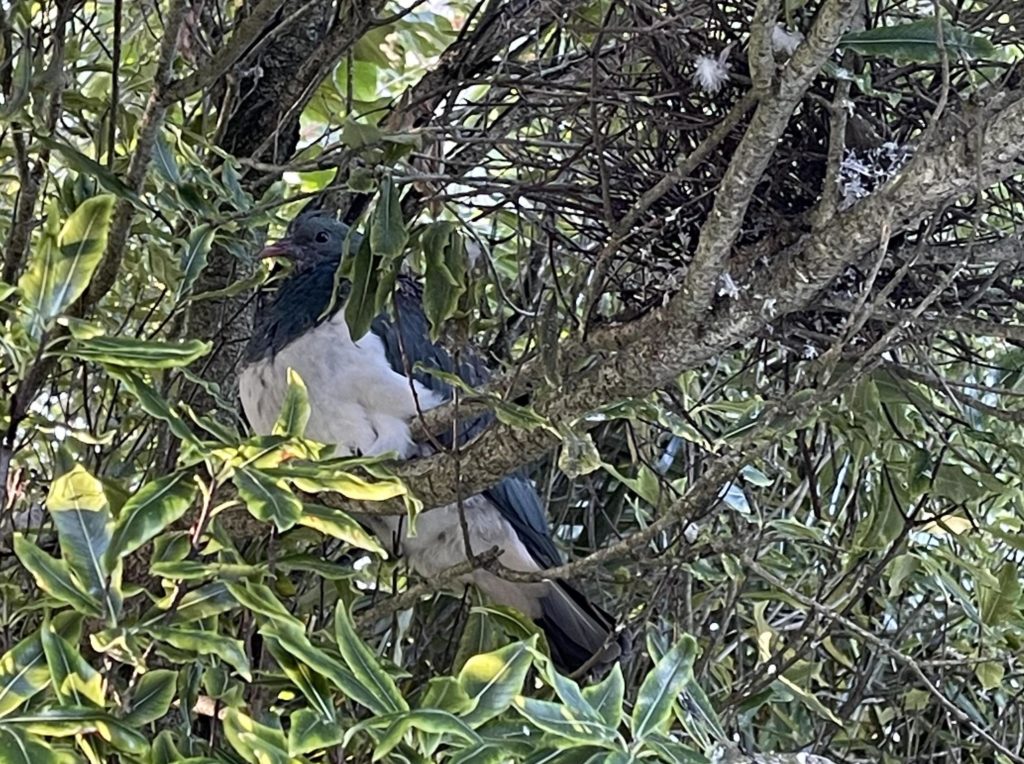
The photo above shows the final morning of our baby bird at the nest. It was the first time we had seen the mother back feeding her chick, which was unusual. Kahurangi practised flapping wings afterwards, and then in the afternoon, the nest was empty. The bird had flown as nature intended.
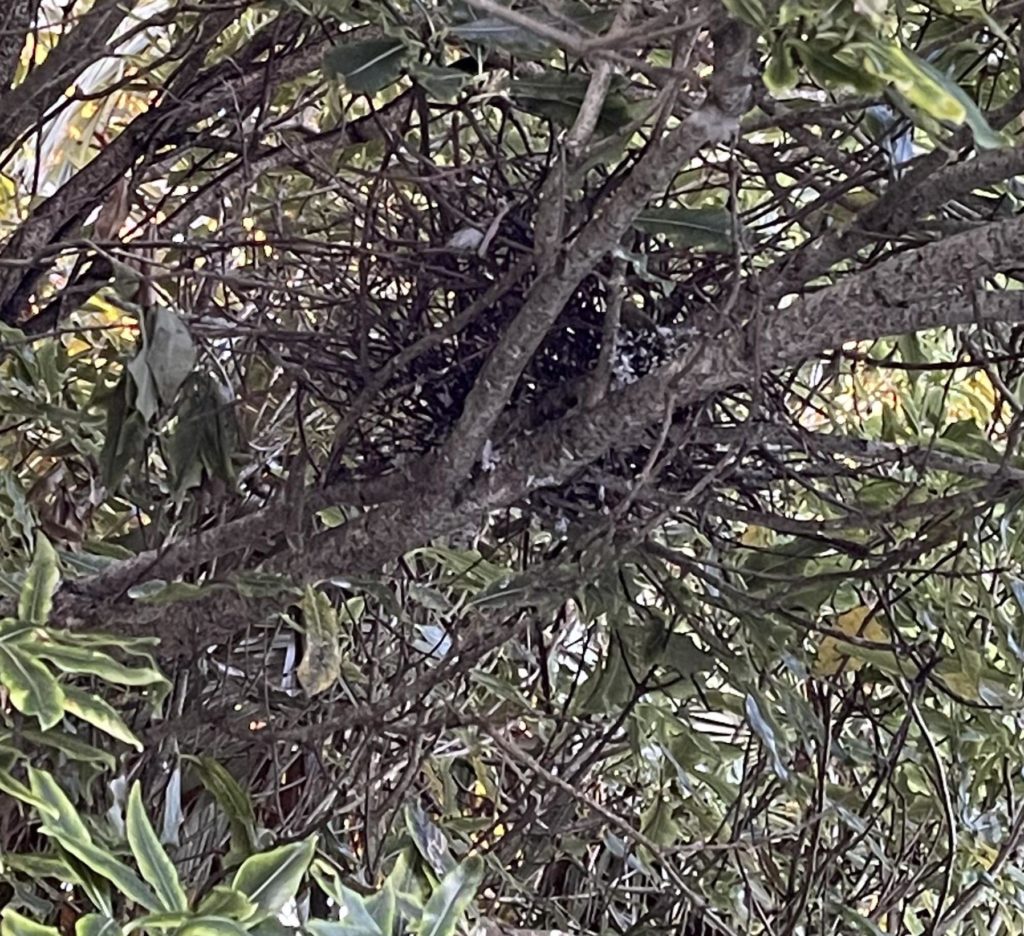
This is why we do what we do to protect what’s on the land.
